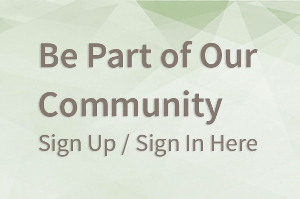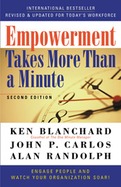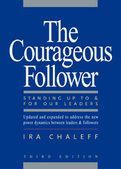BK Blog Post
Is Leadership an Inherent Skill or a Learned Trait?
 Posted by
Shabnam Banerjee-McFarland,
Sales and Marketing Strategist,
Berrett-Koehler Publishers, Inc. .
Posted by
Shabnam Banerjee-McFarland,
Sales and Marketing Strategist,
Berrett-Koehler Publishers, Inc. .
Shabnam is the Sales & Marketing Strategist at BK and coordinates launch campaigns for a few books per season. She is a San Francisco native born & raised, forever wandering the earth like a unicorn.
To decipher this question requires leaders to see the bigger organizational picture before micromanaging, and move away from a culture of control and towards that of collaboration and facilitation.
Author Sandra Janoff stopped by the office to build a roadmap for recognizing the existing conventions of leadership roles, and offer insight for overturning control and power, which will be detailed in her upcoming book with Marvin Weisbord, Lead More, Control Less. The 8 simple rules that Janoff and Weisbord present are just that, simple.
1. Control Structure, Not People
- Leading Organizations, Teams, Task Forces and Communities
2. Let Everyone Be Responsible
- Sharing Risk, Increasing Initiative
3. Consider Anxiety “Blocked Excitement”
- Managing Tension, Managing Yourself
4. Avoid “Taking It Personally”
- Swimming in a Sea of Authority Projections
5. Disrupt Fight or Flight
- Letting Differences Work For You
6. Include the Right People
- Doing It Now, Doing It Fast
7. Experience the “Whole Elephant”
- Acting Decisively With Full Knowledge
8. Surface Unspoken Agreements
- Finding Common Ground When You Least Expect It
They overturn convention and provide a different lens through which we can all learn to be better leaders by considering known regimented rules as open for
interpretation.
First, we must begin with the following mantra “control what you can, let go of what you can’t.” Easier said than done, but becoming aware of the situation within our control and recycling the energy of what we can’t into what we can is invaluable to developing inspiring leaders.
To Janoff and Weisboard, leadership and leaders exist in everyone, and does not require a capital “L” as, say, a corporate structure would suggest. Instead, leadership involves personal endeavors, or paying attention to our personal health to be a better facilitator and collaborator. This includes, but isn’t limited to, managing anxiety so that the organization and people can do the work they are capable of, shifting energy away from negative predictions towards curiosity. Janoff also teaches us how to assemble the right team for each job, a team in which everyone shares responsibility, risk and reward. This creates a more dynamic understanding of leadership, as everyone has their own authority and circumstances in which they shine.
One of the most crucial aspects of evolving leaders is building the right team for the job at hand. Here at BK, there are abundant opportunities for moving in and out of leadership and following positions within different projects, whether on diversity inclusion initiatives, book proposals, or BK Foundation meetings, etc. Everyone is afforded the chance to shine and rely on his or her strengths to enable the best possible outcomes for success.
Both authors have created an incredibly important method for achieving success in leadership positions by incorporating accessibility. Everyone can be a leader, and in order to do so, it calls for a firm grasp of your “blocked excitement,” (Janoff & Weisbord’s interpretation of anxiety) letting everyone be responsible, and allowing differences work for you. Leadership, then, is more of an incorporated strategy, rather than a firm and unwavering position.





